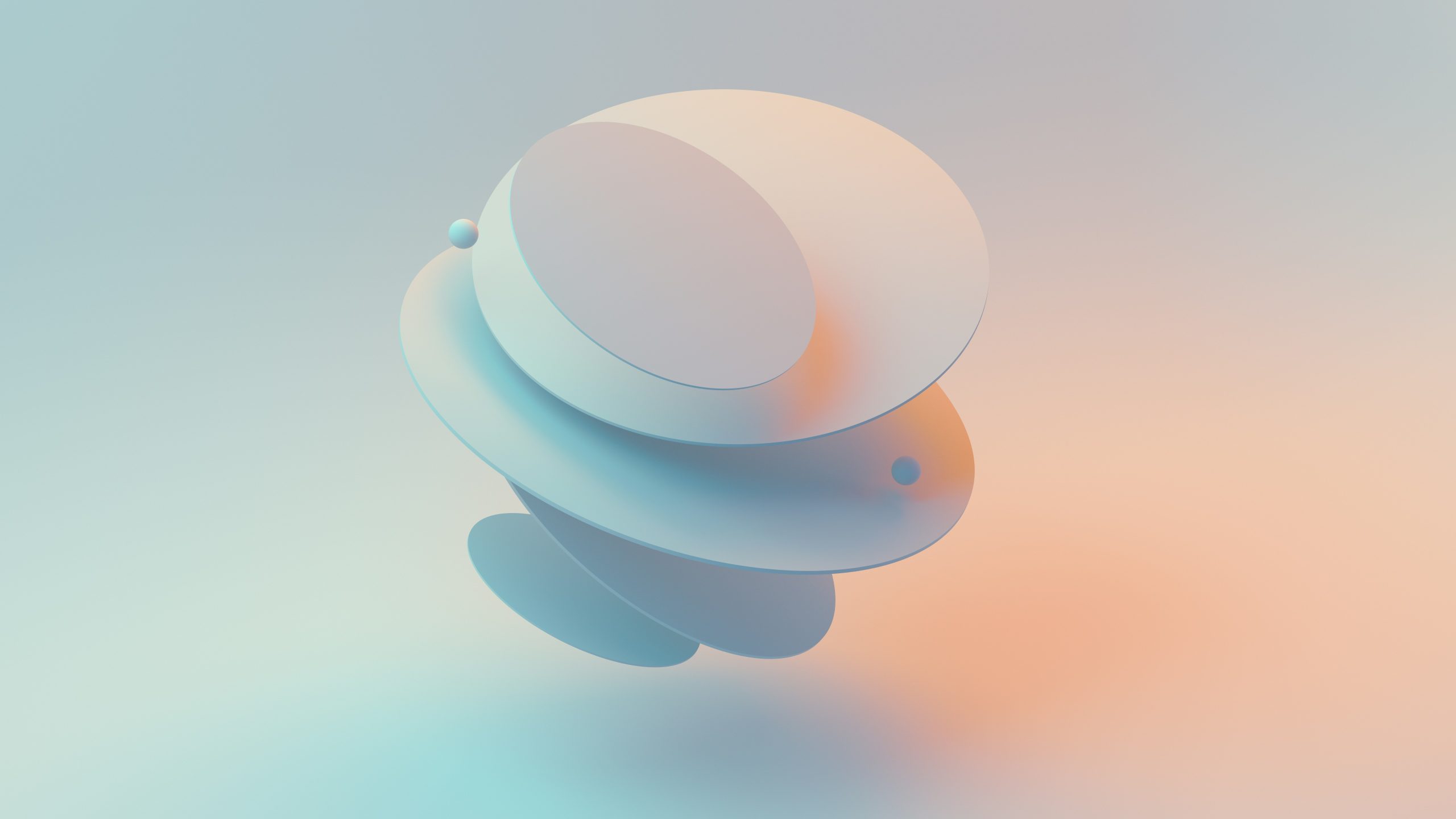Creative Spirit: Exploring Artistic Expression

Looking for more amazing products? Check out our online store and explore our collection here! Happy shopping!
Before diving in, please note: This post is for informational purposes only. If you’d like to know more about how we approach topics, feel free to check out our friendly Disclaimer Page.
Hey there, amazing readers! 
We’re committed to delivering quality posts, and your support (even just sticking around despite the ads) means everything to us. So, bear with us, and thanks for helping us keep the good vibes rolling. Now, on to the fun stuff!
TRANSLATE BUTTON AT THE END OF THE ARTICLE
A Quick Overview
Creativity is an intrinsic part of the human experience, allowing individuals to express themselves in unique and meaningful ways.
The ability to tap into one’s creative spirit can lead to a deeper understanding of oneself and the world around them.
Artistic expression encompasses a wide range of mediums, from painting and sculpture to music and dance.
In this article, we will explore the power of creativity and how it can enrich our lives.
Unleashing Your Creative Spirit
Find Your Passion: Discover what truly inspires you and ignites your creativity.
Whether it’s painting, writing, or cooking, find an outlet that allows you to express yourself authentically.
Create a Creative Space: Designate a space in your home where you can work on your artistic endeavors without distractions.
Surround yourself with things that inspire you, such as artwork, music, or books.
Practice Mindfulness: Be present in the moment and allow your creativity to flow naturally.
Engage in activities that help you relax and clear your mind, such as meditation or yoga.
Take Risks: Don’t be afraid to step outside of your comfort zone and try new things.
Creativity thrives when you push boundaries and explore uncharted territory.
Collaborate with Others: Share your ideas and work with other creative individuals to gain new perspectives and insights.
Collaborations can spark new ideas and inspire you to take your creativity to the next level.
Embrace Failure: Understand that not every creative endeavor will be successful, and that’s okay.
Failure is a natural part of the creative process and can lead to valuable lessons and growth.
Set Goals: Establish clear goals for your creative projects to keep you focused and motivated.
Break down larger tasks into smaller, manageable steps to make progress towards your vision.
Seek Feedback: Don’t be afraid to seek feedback from others, whether it’s friends, family, or fellow artists.
Constructive criticism can help you improve and refine your work.
Stay Curious: Explore different art forms and mediums to expand your creative horizons.
Attend art exhibits, concerts, or workshops to gain new inspiration and insights.
Practice Consistency: Make creativity a part of your daily routine by setting aside time to work on your projects.
Consistency is key in honing your skills and developing your creative voice.
The Power of Artistic Expression
Self-Discovery: Artistic expression allows individuals to explore their inner thoughts, emotions, and experiences.
Through creating art, individuals can gain a deeper understanding of themselves and their place in the world.
Communication: Art serves as a universal language that transcends cultural and linguistic barriers.
It allows individuals to communicate complex ideas and emotions in a way that words alone cannot express.
Emotional Release: Creating art can be a cathartic experience, allowing individuals to release pent-up emotions and express feelings that may be difficult to articulate verbally.
Understand the Powerful Law of Karma and Its Impact – Explore Here!

Inspiration: Art has the power to inspire and motivate both creators and viewers alike.
It can spark new ideas, ignite passion, and provide a sense of purpose and fulfillment.
Empathy: Viewing and creating art can foster empathy and understanding towards others.
It allows individuals to see the world from different perspectives and gain insight into the experiences of others.
Healing: Art therapy is a powerful tool for healing and self-expression.
It can help individuals process trauma, reduce stress, and improve overall mental well-being.
Social Connection: Artistic expression can bring people together and create a sense of community.
Collaborating on artistic projects or sharing artwork can foster connections and relationships.
Cultural Preservation: Art serves as a means of preserving cultural heritage and traditions.
It allows individuals to pass down stories, beliefs, and values from one generation to the next.
Personal Growth: Engaging in artistic expression can lead to personal growth and development.
It challenges individuals to think creatively, problem-solve, and push their boundaries.
Impact: Art has the power to create social change and provoke thought.
It can challenge norms, raise awareness about important issues, and inspire action in individuals and communities.
Understanding the Creative Process
Inspiration: The creative process often begins with an idea or inspiration that sparks the imagination.
It can come from anywhere – nature, music, literature, or personal experiences.
Incubation: After the initial spark of inspiration, the idea begins to incubate in the mind.
This stage involves letting the idea simmer and develop subconsciously.
Execution: The idea is brought to life through the process of creation.
Artists use various techniques, materials, and skills to translate their vision into a tangible form.
Reflection: Once the artwork is complete, artists reflect on their process and the final product.
They evaluate what worked well, what could be improved, and what they learned from the experience.
Revision: Artists may choose to revise or refine their work based on their reflections.
This stage involves making adjustments, additions, or corrections to enhance the overall quality of the piece.
Completion: The creative process culminates in the completion of the artwork.
Artists may feel a sense of accomplishment, satisfaction, or even relief at having brought their vision to fruition.
Feedback: Seeking feedback from others is an important part of the creative process.
Constructive criticism can provide valuable insights and help artists grow and improve their work.
Iteration: The creative process is often iterative, with artists revisiting and refining their work over time.
They may create multiple versions of a piece or explore different approaches to achieve their desired outcome.
Experimentation: Artists may experiment with new techniques, materials, or styles to push the boundaries of their creativity.
This willingness to try new things can lead to breakthroughs and innovation.
Evolution: The creative process is a continuous journey of growth and evolution.
Artists evolve their style, skills, and perspective over time, constantly learning and adapting to new challenges and experiences.
Exploring Different Art Forms
Visual Arts: Visual arts encompass a wide range of mediums, including painting, drawing, sculpture, photography, and printmaking.
Artists use visual elements such as line, color, shape, and texture to create works of art that engage the viewer visually and emotionally.
Performing Arts: Performing arts include disciplines such as dance, theater, music, and film.
These art forms involve live performances that convey stories, emotions, and ideas through movement, sound, and visuals.
Literary Arts: Literary arts encompass writing, poetry, prose, and storytelling.
Writers use words and language to create narratives, evoke emotions, and capture the imagination of readers.
Media Arts: Media arts encompass digital art, animation, video, and graphic design.
Artists use technology and multimedia platforms to create dynamic and interactive works of art that engage audiences in new and innovative ways.
Crafts: Crafts include traditional practices such as pottery, woodworking, weaving, and jewelry-making.
Artists use their hands and specialized techniques to create functional or decorative objects that showcase skill and craftsmanship.
Release the Weight of Karma and Embrace Freedom – begin here.
Mixed Media: Mixed media art combines different materials, techniques, and mediums to create eclectic and visually stimulating works of art.
Artists experiment with collage, assemblage, and other techniques to create unique and layered compositions.
Street Art: Street art encompasses graffiti, murals, and public installations that engage with urban spaces and communities.
Street artists use public spaces as their canvas to make bold statements, challenge norms, and ignite dialogue.
Fashion Design: Fashion design involves creating clothing, accessories, and wearable art that reflect personal style, creativity, and cultural influences.
Fashion designers use fabric, color, texture, and silhouette to express their unique vision.
Digital Art: Digital art encompasses art created using digital tools, software, and technologies.
Artists use computers, tablets, and digital platforms to create illustrations, animations, and interactive installations that push the boundaries of traditional art forms.
Environmental Art: Environmental art involves creating artworks that engage with and respond to the natural environment.
Artists use natural materials, landscapes, and public spaces to create site-specific installations that raise awareness about environmental issues and sustainability.
Benefits of Embracing Creativity
Enhanced Well-Being: Engaging in creative activities can improve mental health, reduce stress, and increase overall well-being.
Creating art allows individuals to express themselves, relax, and unwind from the pressures of daily life.
Boosted Confidence: Embracing creativity can boost self-confidence and self-esteem.
Accomplishing creative goals, receiving positive feedback, and seeing improvement in one’s skills can instill a sense of pride and accomplishment.
Increased Problem-Solving Skills: Creativity involves thinking outside the box, finding innovative solutions, and adapting to challenges.
Understand the Powerful Law of Karma and Its Impact – Explore Here!

Engaging in creative activities can improve problem-solving skills and foster a growth mindset.
Improved Focus and Concentration: Creativity requires focus, attention to detail, and sustained concentration.
Practicing creative activities can enhance cognitive abilities, memory, and mental acuity.
Enhanced Communication Skills: Artistic expression involves conveying ideas, emotions, and stories through various mediums.
Engaging in creative activities can improve communication skills, empathy, and the ability to connect with others.
Stress Relief: Creating art can serve as a form of stress relief and relaxation.
Engaging in creative activities can provide a sense of calm, mindfulness, and a break from the demands of everyday life.
Increased Resilience: Embracing creativity can help individuals cope with adversity, setbacks, and challenges.
Artistic expression allows individuals to process emotions, gain perspective, and find meaning in difficult situations.
Personal Growth: Engaging in creative activities can lead to personal growth, self-discovery, and self-expression.
Creativity challenges individuals to explore new ideas, push boundaries, and cultivate their unique voice.
Connection with Others: Creativity can foster connections with others, build relationships, and create a sense of community.
Collaborating on creative projects, sharing artwork, and attending cultural events can bring people together and create shared experiences.
Joy and Fulfillment: Embracing creativity can bring joy, fulfillment, and a sense of purpose to individuals’ lives.
Creating art allows individuals to express themselves authentically, explore their passions, and find meaning in their creative pursuits.
Overcoming Creative Blocks
Identify the Block: Recognize when you are experiencing a creative block and identify the underlying reasons.
It could be fear, self-doubt, perfectionism, or lack of inspiration.
Take a Break: Step away from your creative project and give yourself time to recharge.
Engage in activities that relax and rejuvenate your mind, such as going for a walk, meditating, or listening to music.
Change Your Environment: Switch up your surroundings to stimulate new ideas and perspectives.
Work in a different location, rearrange your workspace, or visit a new place for inspiration.
Seek Inspiration: Surround yourself with things that inspire you, such as art, literature, music, or nature.
Immerse yourself in creative stimuli to reignite your imagination and spark new ideas.
Experiment: Try new techniques, materials, or approaches to break out of your creative rut.
Embrace experimentation and allow yourself to make mistakes and learn from them.
Set Realistic Goals: Break down your creative project into smaller, manageable tasks to avoid feeling overwhelmed.
Set realistic goals and deadlines to keep you focused and motivated.
Take Risks: Don’t be afraid to take risks and push boundaries in your creative work.
Embrace imperfection, embrace failure, and see it as an opportunity for growth and learning.
Collaborate: Work with other creative individuals to gain new perspectives and insights.
Collaboration can spark new ideas, provide feedback, and help you overcome creative blocks.
Practice Self-Care: Take care of your physical, emotional, and mental well-being to nurture your creativity.
Get enough rest, eat well, exercise, and engage in activities that bring you joy and relaxation.
Trust the Process: Trust in your creative abilities, intuition, and vision.
Believe in your unique voice and perspective, and have faith that you will overcome creative blocks and continue to create meaningful art.
Cultivating Your Artistic Vision
Define Your Vision: Clarify your artistic vision by reflecting on your values, interests, and goals.
Identify what drives and inspires you, and how you want to express yourself creatively.
Experiment and Explore: Try different techniques, mediums, and styles to explore your artistic interests and strengths.
Experimentation can help you find your unique voice and develop your artistic vision.
Seek Inspiration: Look for inspiration in everyday life, nature, art, music, literature, and other sources.
Keep a journal, sketchbook, or mood board to collect ideas and images that resonate with your artistic vision.
Develop Your Skills: Hone your craft by practicing regularly, taking classes, workshops, or seeking mentorship from experienced artists.
Continuous learning and improvement are essential in cultivating your artistic vision.
Stay True to Yourself: Stay authentic and true to your artistic vision, values, and voice.
Avoid comparing yourself to others, and focus on developing your unique style and perspective.
Reflect and Evolve: Reflect on your artistic journey, experiences, and creations to evolve your artistic vision over time.
Embrace feedback, challenges, and growth opportunities to refine your vision and push boundaries.
Set Goals: Establish clear goals and milestones to guide your artistic journey and track your progress.
Set short-term and long-term goals that align with your artistic vision and aspirations.
Find Your Voice: Discover your unique voice and perspective by exploring different themes, subjects, and emotions in your art.
Express yourself authentically and passionately to communicate your artistic vision effectively.
Embrace Challenges: Embrace challenges, setbacks, and failures as opportunities for growth and learning.
Overcoming obstacles can strengthen your artistic vision and deepen your understanding of yourself as an artist.
Share Your Art: Share your art with others through exhibitions, social media, galleries, or collaborations.
Sharing your work can help you connect with a wider audience, receive feedback, and gain recognition for your artistic vision.
Finding Inspiration in Everyday Life
Nature: Nature can be a rich source of inspiration for artists.
The beauty, colors, textures, and patterns found in nature can spark ideas for creative projects and artworks.
Music: Music has the power to evoke emotions, memories, and images in the mind.
Listening to music can inspire artists to create artworks that capture the mood, rhythm, and energy of the music.
Literature: Books, poems, and stories can provide endless inspiration for artists.
Literary works can spark ideas, themes, characters, and settings for creative projects.
Art: Visiting art galleries, museums, and exhibitions can expose artists to a wide range of styles, techniques, and mediums.
Seeing other artists’ work can spark new ideas, perspectives, and approaches in one’s own art.
Travel: Traveling to new places, experiencing different cultures, and seeing unfamiliar sights can inspire artists to create artworks that reflect their experiences, observations, and impressions.
People: Interacting with people, observing human behavior, and listening to stories can inspire artists to create artworks that capture the human experience, emotions, and relationships.
Emotions: Emotions such as love, joy, sadness, fear, and anger can be powerful sources of inspiration for artists.
Channeling emotions into creative projects can lead to expressive, compelling, and authentic artworks.
Memories: Memories, dreams, and reflections on the past can inspire artists to create artworks that explore themes of nostalgia, identity, and personal history.
Colors: Colors can evoke moods, feelings, and associations in art.
Exploring different color palettes and combinations can inspire artists to create vibrant, harmonious, or striking artworks.
Everyday Objects: Everyday objects, scenes, and moments in daily life can provide inspiration for artists.
Finding beauty, meaning, or intrigue in the ordinary can lead to creative projects that celebrate the mundane and overlooked aspects of life.
The Intersection of Art and Emotion
Expressive Art: Art is a powerful medium for expressing emotions, feelings, and experiences.
Artists use color, form, texture, and composition to convey emotional states and communicate with viewers on a visceral level.
Emotional Impact: Art has the ability to evoke strong emotions, memories, and responses in viewers.
Whether it’s joy, sadness, anger, or awe, art can trigger emotional reactions and provoke thought and reflection.
Empathy and Connection: Viewing art can foster empathy and connection by allowing viewers to step into the shoes of the artist and experience the world from their perspective.
Through art, individuals can gain insight into different cultures, experiences, and viewpoints, leading to greater understanding and compassion for others.
Healing and Catharsis: Creating and experiencing art can be therapeutic, providing a means of processing and expressing difficult emotions or experiences.
Art therapy, for example, harnesses the creative process to promote healing and personal growth, allowing individuals to explore and confront their emotions in a safe and supportive environment.
Cultural Expression: Art serves as a powerful tool for cultural expression, preserving and transmitting the stories, values, and traditions of diverse communities.
Through art, individuals can celebrate their heritage, identity, and shared experiences, fostering a sense of belonging and connection within their cultural group.
Social Commentary: Artists often use their work to comment on social, political, and environmental issues, sparking dialogue and raising awareness about important topics.
By shining a light on injustice, inequality, and human suffering, art can inspire action and drive positive change in society.
Overall, the intersection of art and emotion is a rich and complex landscape that encompasses a wide range of human experiences and expressions.
Whether through the creation or appreciation of art, individuals have the opportunity to connect with their emotions, engage with the world around them, and find meaning and beauty in the human experience.

The Enlightenment Journey is a remarkable collection of writings authored by a distinguished group of experts in the fields of spirituality, new age, and esoteric knowledge.
This anthology features a diverse assembly of well-experienced authors who bring their profound insights and credible perspectives to the forefront.
Each contributor possesses a wealth of knowledge and wisdom, making them authorities in their respective domains.
Together, they offer readers a transformative journey into the realms of spiritual growth, self-discovery, and esoteric enlightenment.
The Enlightenment Journey is a testament to the collective expertise of these luminaries, providing readers with a rich tapestry of ideas and information to illuminate their spiritual path.
Our Diverse Expertise
While our primary focus is on spirituality and esotericism, we are equally passionate about exploring a wide range of other topics and niches 

To ensure we provide the most accurate and valuable insights, we collaborate with trusted experts in their respective domains 
Our blog originally focused on spirituality and metaphysics, but we’ve since expanded to cover a wide range of niches. Don’t worry—we continue to publish a lot of articles on spirituality! Frequently visit our blog to explore our diverse content and stay tuned for more insightful reads.
Hey there, amazing reader! 
Check out our store here and take a peek at some of our featured products below! Thanks for being awesome!












